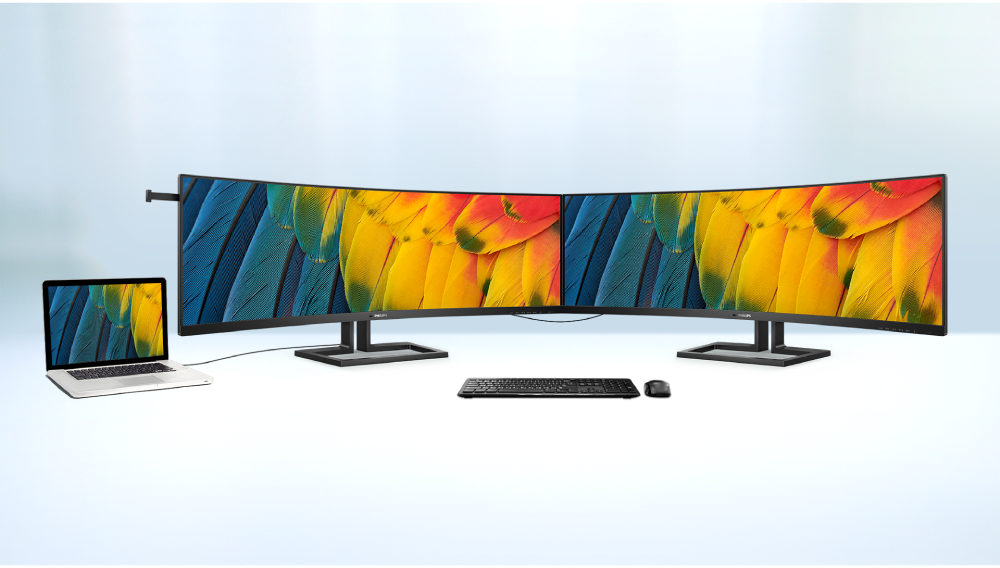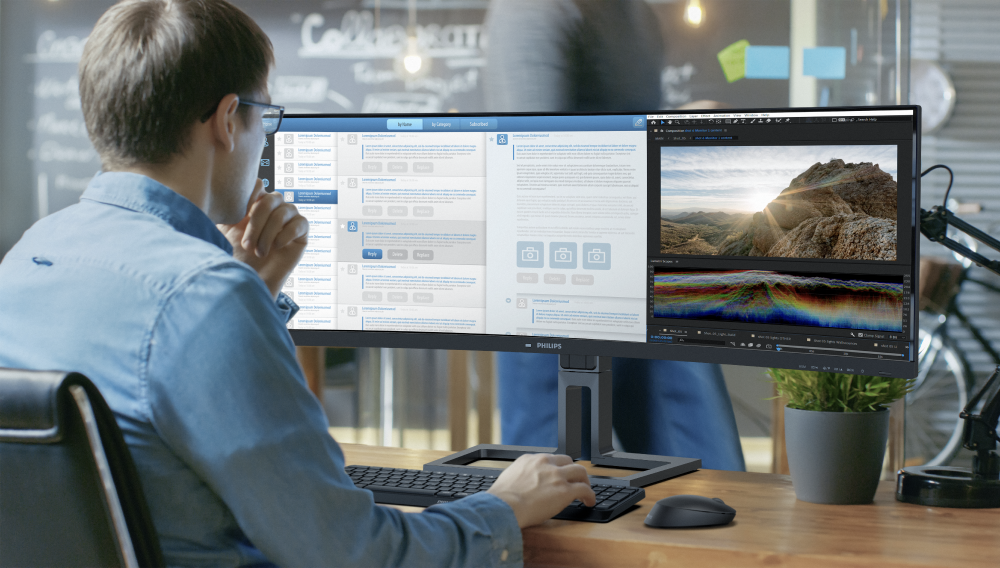![]() 2023/4/19 | MMDInnovationHub
2023/4/19 | MMDInnovationHub
Snaking and tangled wires and cables do not an efficient workspace make. But with a multiple monitor setup, this commonly happens. Throw in a table barely big enough to fit two displays, and it’s hardly ideal for increased productivity.
If you’re into graphic design, producing videos or animation using more than one screen is often a requirement. And it’s not just the number of monitors needed but their size to consider. Ample space becomes a necessity.
Without this, clutter is very real. And could, unfortunately, hamper the creative process and output.
Solving workspace clutter
Fortunately, there is daisy chaining. Simply, it’s connecting a series of monitors, with only one directly linked to a computer or laptop.
Why daisy chain? Because multiple monitors provide a bigger screen real estate, so it’s easier to see everything clearly and conveniently, especially minute details. With two or more interconnected displays, there is no need to split the screen or launch multiple tabs to facilitate efficient multitasking.
Cable management becomes effortless, whether in a professional setting or at home. Best of all, your workspace, whatever the size, remains neat.
Tangled wires result from hooking each monitor to the computer graphic board individually. When daisy chaining, each display connects to the other using a DisplayPort 1.2 input and output terminal, with just one monitor connected to the computer.
Important reminders
There are two vital things to remember when opting for a daisy-chain setup. First, check that your computer is compatible with daisy-chaining and has a DisplayPort 1.2. And second is to take note of the number of monitors the PC or laptop can hold, regardless of the DisplayPort being able to handle multiple connections.
Once set up, there is no need to worry about visual quality not being good enough because it allows a combination of display resolutions to ensure images appear similar to what is on display on the main screen hooked to the PC.
And that’s where the choice of monitor becomes critical. The display must be suited for daisy-chaining and your needs. A good option is a curved monitor wide enough to provide that expansive view while working.
 With daisy chaining, only one monitor is directly linked to the PC, while the rest are hooked to other screens with a DisplayPort 1.2 connector.
With daisy chaining, only one monitor is directly linked to the PC, while the rest are hooked to other screens with a DisplayPort 1.2 connector.
A good bet for daisy chaining
Philips Monitors offers a business monitor line, including the 45B1U6900C, a 45” curved model, with dual QHD resolution (5120 x 1440p). Its SuperWide screen with a 32:9 aspect ratio is already like having two 27” 16:9 QHD displays.
Daisy chain two of these models, and it’s almost like sitting in front of a wide movie screen, yet without suffering from eye strain due to the curved design that affords a near-natural view.
The best advantage of a curved screen is its ability to provide an immersive experience because the eyes can take in the whole expanse of the screen minus visual strain.
 A curved display, like the Philips 45B1U6900C model, is ideal for daisy chaining and provides an immersive experience less the eye strain.
A curved display, like the Philips 45B1U6900C model, is ideal for daisy chaining and provides an immersive experience less the eye strain.
The 45B1U6900C also comes with two USB-C ports that allow smooth viewing of a high-resolution video, charging another device, and transferring data, all with a single cable.
Visuals become sharper, smoother, and more lifelike as this display monitor is VESA-certified as meeting the true DisplayHDR™ 400 standard.
Among its other features are the adjustable monitor stand that can tilt, swivel and be adjusted for height; and to ensure comfort even when exposed to the screen for extended periods, it comes with LowBlue mode that meets the TUV Rheinland Eyesafe® and EasyRead to protect the eyes.
Today, a limited workspace is no excuse not to function efficiently and produce excellent output in a timely manner. With daisy chaining technology, this is now possible.